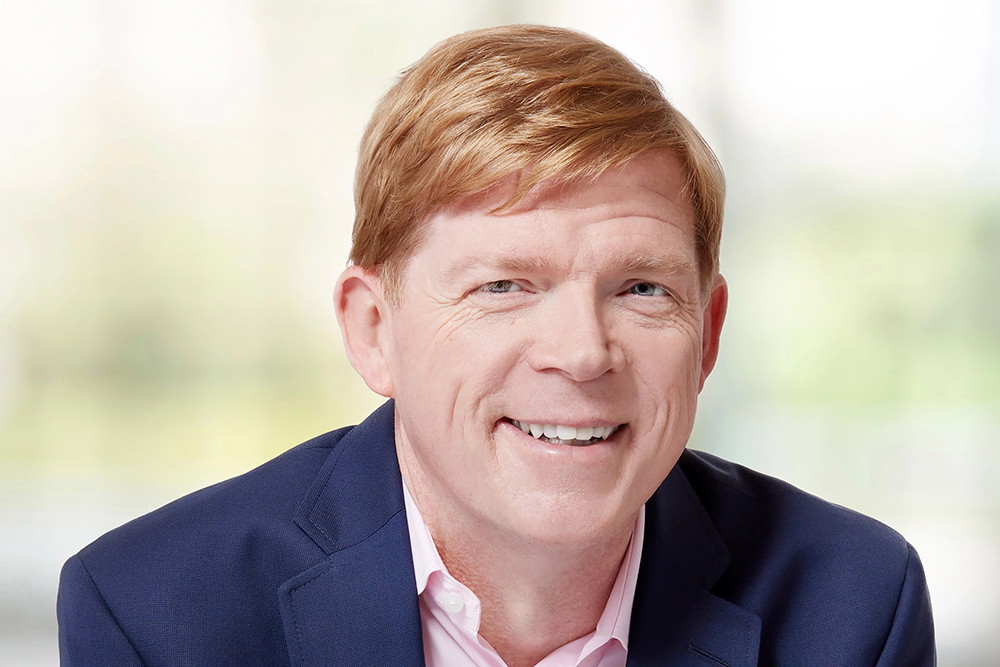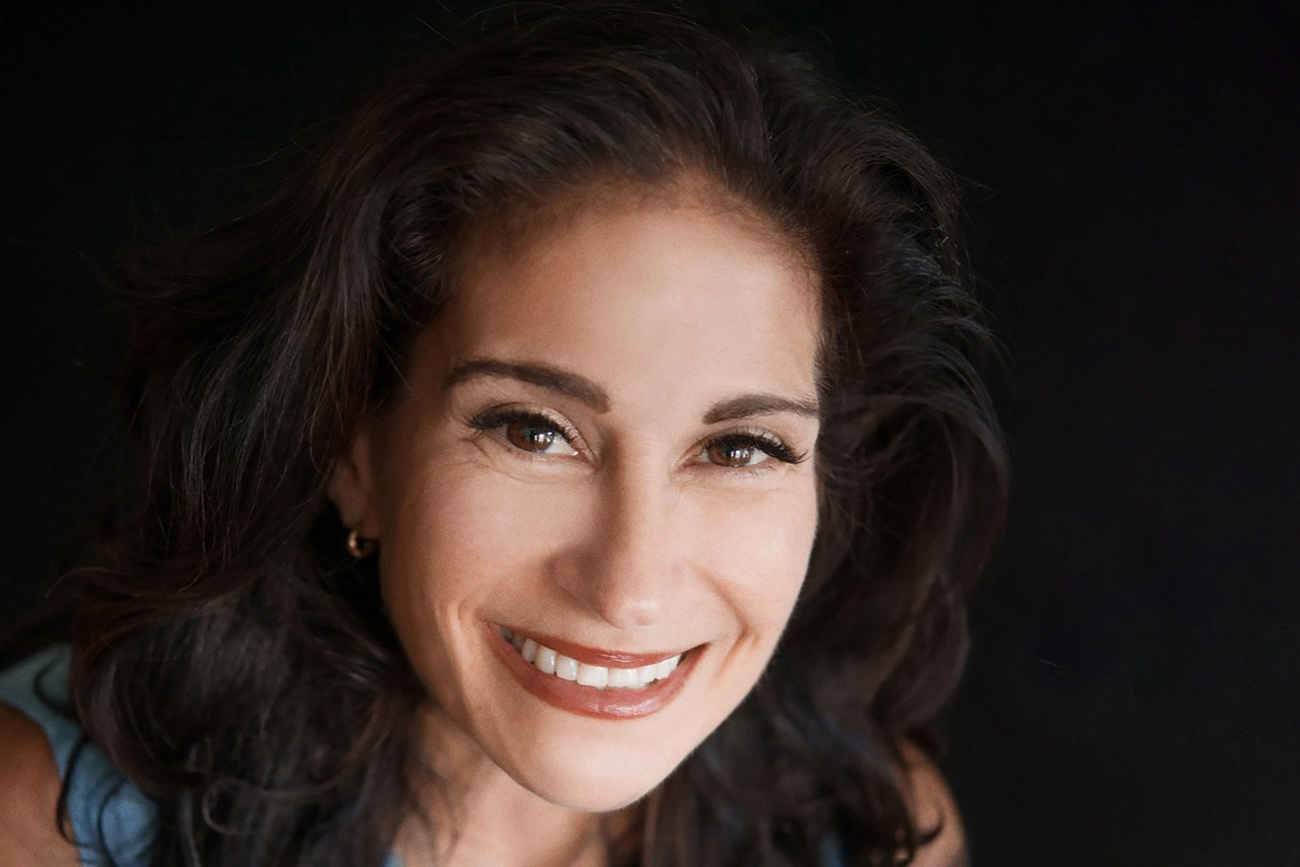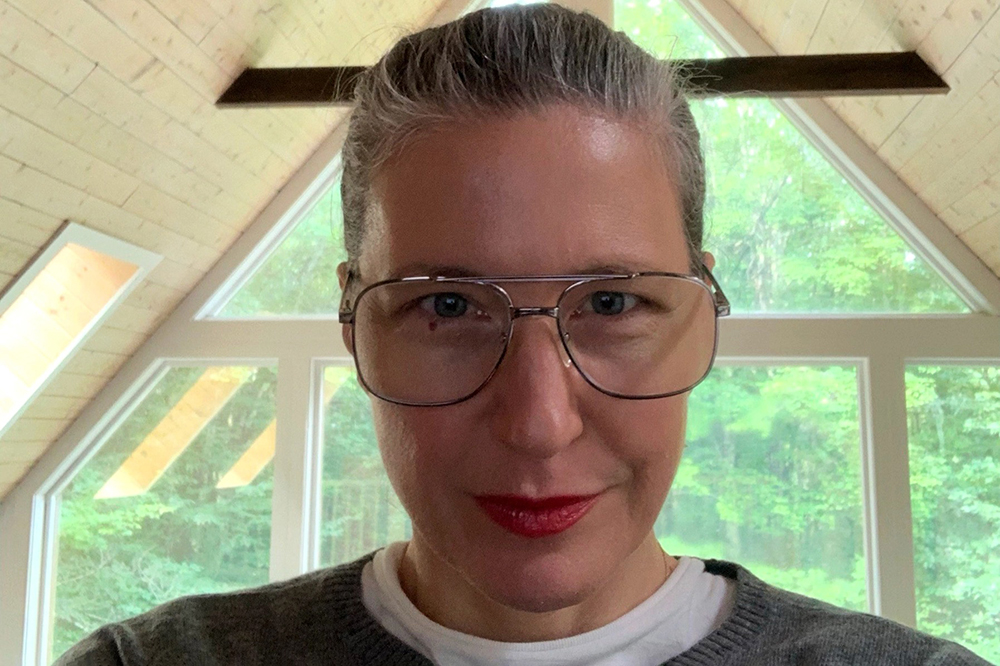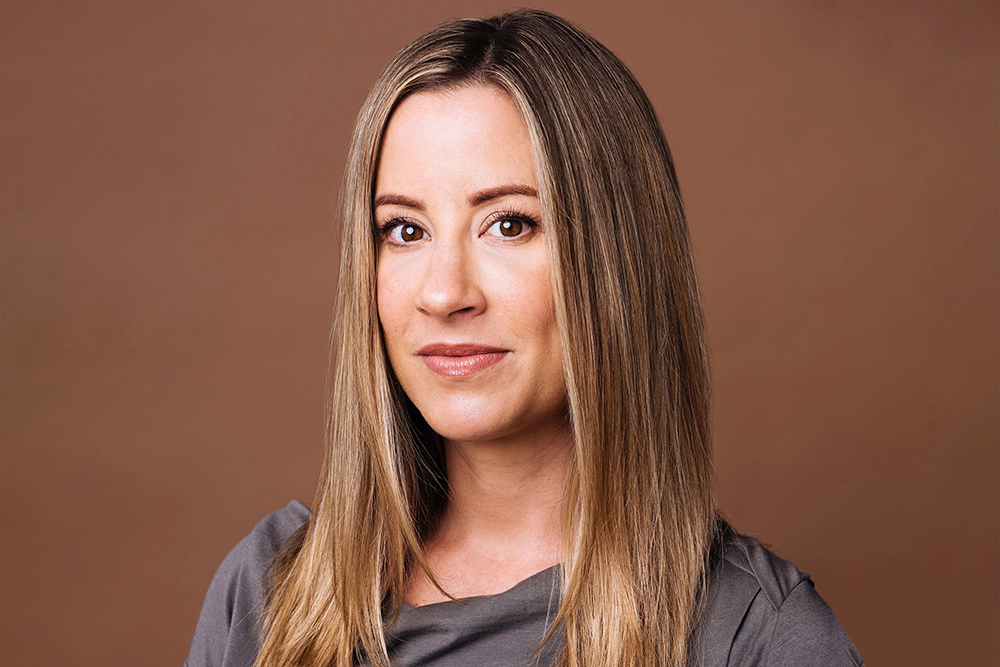
美国最高法院(Supreme Court)推翻了“罗伊诉韦德案”(Roe v. Wade)的裁决,这激发了许多生育权的支持者公开分享她们的堕胎故事——通常是第一次——以努力消除公众对堕胎经历的偏见。这次,一向比公众更保守的企业却迟迟没有参与进来。
但高管也是人——有四分之一的美国女性在45岁之前堕过胎,一些高管就在其中。虽然每个人都有权将自己的堕胎故事保密,但选择分享堕胎故事可能会带来深远影响。
《财富》杂志邀请各行各业和公司的商界领袖——从初创公司到处于巅峰的美国企业——分享她们的堕胎故事。14位商界领袖同意这样做,以下故事是她们自己讲述的。她们分享了几十年前在开始职业生涯之前意外怀孕的故事,以及在发现孩子无法存活而被迫终止妊娠后强烈希望自己能够保住孩子的故事。
在美国,企业在决定员工未来获得生殖保健服务方面发挥着至关重要的作用。在禁止堕胎的州,雇主为员工提供堕胎手术和交通费用。在未来的几个月和几年里,公司将决定在哪里雇佣员工,以及把它们的州税上缴给哪里。企业将被迫更仔细地审查它们如何可以发挥游说能力,以及哪些议员接受了它们的竞选捐款。
然而,公开分享个人堕胎故事仍然是一种耻辱,尤其是作为商界领袖。值得注意的是,许多同意讲述自己堕胎故事的人都是为自己工作的创始人和首席执行官,而不是大型公司的高管。
正如这些故事所表明的那样,首席执行官和领导者在员工堕胎问题上的决策并不是在实施影响理论上的个体的抽象政策。这些决策会影响他们的员工,以及他们尊重并每天与之共事的领导。

安妮·波诺,企鹅兰登书屋(Penguin Random House)增长营销副总裁
2002年2月,我还在读大三,当时快21岁了。我和某人约会,结果发现自己怀孕了。我的人生才刚刚开始。我有自己的计划、希望和梦想,但从没有考虑过让自己在20岁时为人父母。
我和我的伴侣进行了一次理智而冷静的讨论,然后我去了康涅狄格州纽黑文的计划生育中心(Planned Parenthood)。诊所外面有抗议者,那场景很吓人。但一进到诊所,我就觉得自己得到了支持。我很容易就能够获得护理。
堕胎往往充满了外在的耻辱和创伤。但我很荣幸,我的经历是积极的——我一点都不觉得羞耻。这很正常,我只是这样做了。这是医疗保健。我今天有两个孩子;一个是女孩,她将来不能按照自己意愿堕胎了。我们住在北卡罗来纳州,如果她在20岁时怀孕,她就将面临艰难的决定、耻辱和我从未面对过的困难。

麦迪逊·巴特勒,Grav公司首席人事官
我的堕胎经历救了我的命。在我20岁出头的时候,我和一个有暴力倾向的人开始了一段感情。2014年,我发现自己怀孕了,当时我23岁,我们住在罗德岛。我想终止妊娠,他也这么想。
我做了药物流产;我自己服药——那是最痛苦的部分。我非常痛苦。当我在2015年再次怀孕时,我去了一家生殖健康诊所,这样我就不会再独自承受那种痛苦了。在这段关系中,我在经济上受到了虐待;如果我无法在家附近堕胎,我就不可能离开这个州去接受我需要的护理。
我想,如果我没有做过这两次堕胎手术,我的余生就将和一个虐待我的人绑在一起。更不用说在一个充满暴力的家庭抚养一个孩子意味着什么。我从未感到一丝遗憾——我唯一感到的是,我知道自己保留了一些自由。和他生了孩子就意味着我再也不能重获自由了。

布兰登·卡森,《财富》500强里一家公司的副总裁
我出生于1965年,我妈妈在1963年生下了我的姐姐,当时她16岁。20世纪70年代,在新墨西哥州,身为单身母亲,我妈妈抚养我们姐弟长大。当她在2009年去世时,我们读了她的日记,发现她曾经在20世纪60年代初怀过一次孕,并做过流产,当时她只有十四五岁。我们没有了解很多细节,但这是在堕胎合法之前,而且他们没有经济能力,所以我们认为她不会开车去一个更大的城市进行堕胎手术。
对她来说,16岁就成为母亲,不断换工作来养活我们已经很艰难了——如果她在14岁时被迫成为母亲,我就只能想象那会有多艰难。我们在一个保守的社区长大,但我妈妈总是对某些社会问题充满热情。这就是我妈妈教我的:这不是一个真正的政治决定。这是一项人权。

凯特·科尔,Athletic Greens总裁兼首席运营官
我有两个漂亮的孩子,但我在怀这两个宝宝之前和中间有过几次流产。其中一次流产不是很顺利。2018年年底,我去看了妇产科医师,他们证实我流产了。我需要进行刮宫手术,以确保没有残存物,这样我就不会出现可能威胁健康或再次怀孕的并发症。刮宫手术与手术流产非常相似。
我当时在亚特兰大,担任Focus Brands的总裁兼首席运营官,在那里,为期六周的堕胎禁令可能很快就会生效。现在我想,有多少医疗服务提供者会对进行堕胎手术感到紧张,或者担心失去执照和执业能力,甚至坐牢。医疗服务提供者可能会说:“看,你需要进行手术。但我们这里不能再做手术了。”

凯西·加斯佩林,Amalgamated Bank社会影响银行业务第一副总裁
我和现在的丈夫在一起已经19年了——从我20岁开始。我们等了15年才组建了家庭,这样我们才能在职业和经济上取得成功。2018年,我生下了我们的儿子。2020年,我自然流产了——当时我并不知道自己怀孕了。然后在2021年,我在计划怀孕期间流产了两次,都需要医疗支持。第二次是在12月。在美国最高法院听取“多布斯诉杰克逊妇女健康组织案”(Dobbs v. Jackson Women's Health Organization)的口头辩论,并表明其在堕胎权问题上的倾向的前一天,我发现怀孕是不可行的。
马萨诸塞州的医生让我选择使用药物流产、进行外科手术或顺其自然。在我第一次流产后,我知道第三种选择会是什么样子;我希望在安全可控的环境中(在我家中)进行药物流产。这一选择给了我隐私和尊严。这一选择承认了我的人性——怀着孩子的妇女的人性。我无法想象如果不能控制这个决定会有多痛苦。

维多利亚·塞恩·吉奥亚,Perelel联合创始人及联合首席执行官
29岁时,我刚刚结婚。我和丈夫都想要一个大家庭。2016年,我第一次怀孕,当时我们住在洛杉矶,我流产了。孩子在九周时失去了心跳。我尝试过药物流产,但没有成功。我必须尽快进行刮宫手术。由于潜在的疤痕组织,我有感染甚至死亡的风险,以及威胁未来生育能力的风险。我拼命想要一个孩子,所以这对我来说很可怕。手术在24小时内完成对我的健康至关重要。
严格来说,这不是我的选择。但能够进行严格意义上的堕胎手术——快速而安全地进行堕胎手术——让我今天有了三个健康的孩子。

琳达·金,Moon Mental Health创始人及首席执行官
2001年,21岁的我刚从大学毕业,准备进入医学院。我是一个陷入恋爱的年轻人,我的人生还有很长的路要走,我根本没有做好为人父母的准备。我去了波士顿的计划生育中心。这是艰难的。这本身已经是一个令人心碎和痛苦的决定。然后你去诊所,就会看到抗议者们大喊大叫,试图吓跑你。
六年后,我在2007年生下了三个女儿中的第一个,当时我在麻省总医院(Mass General)做精神病住院医师。那是怀孕最糟糕的时候——我在怀孕38周和39周的时候上了两周夜班。但这对我来说是正确的选择。人们有时会谈论导致女性终止妊娠的“种种不便”。这不是方不方便的问题——每个人都会知道他们何时做好了情绪准备,这对他们来说是正确的选择。当一个人准备好了,他们就能够消除障碍去做最困难的事情。当他们没有准备好时,怀孕会造成巨大的伤害。

苏珊·勒纳,Michael Stars创始人及首席执行官
我在20世纪50年代和60年代长大,那时没有人谈论性、经期,甚至母乳喂养或其他任何事情。要服用避孕药,我需要得到父母的许可。当我离开家去威斯康辛大学(University of Wisconsin)读书时,我终于在计划生育中心服了避孕药。大学辍学后,我环游世界,最终在印度开始做进口生意。当我往返印度,创办新公司的时候,我遇到了一个法国男人,和他有过一段短暂的恋情,然后怀孕了。
我是1978年回到洛杉矶的时候发现的,那时我27岁。当时“罗伊诉韦德案”的判决才过去五年,但我不知道有谁经历过这件事情。没有人谈论这件事情。但我知道我可以合法堕胎。我很幸运,我的妇科医生愿意为我做堕胎手术。
如果我未能堕胎,我的麻烦就大了。我不知道我会做什么。我没有积蓄。我的父母可能会收留我,但当时他们在芝加哥,而且年纪很大了。我一生中所做的一切——1986年我和丈夫创办了Michael Stars,如今我们雇佣了110名员工——都不会发生。我很幸运能够自由地做出这个决定,并且无怨无悔地继续前行。

苏内拉·马徳哈尼, Stax创始人及首席执行官
我就是这样一个公众人物。我几乎分享我生活中的一切。这是我从未分享过的。这是我唯一的秘密。
那是2005年。当时我20岁,在佛罗里达州盖恩斯维尔上大学。计划生育中心是我知道能够进行堕胎的唯一地点。我和男朋友一起去了计划生育中心,他现在是我的丈夫。他和我最好的朋友是我生命中唯一知道这件事情的人。我没有告诉我的父母或我最亲密的朋友。
我担心的是我无法做所有我想做的事情。我只是还没有准备好。后来我完成了大学学业——我是一个有抱负的人。如果我没有做出那样的选择,我的人生将会走上完全不同的道路。并不是说那样做就会走上不归路,而是会有所不同。
我25岁时在奥兰多创办了Stax。我现在有300名员工,我们是一家独角兽公司。如果我没有做出那样的选择,这一切都不可能发生。如果我还没有准备好就被迫成为母亲,这一切都不会发生。我必须为自己做出那样的选择。在我30岁的时候,我们有了第一个女儿——那时我已经准备好了。
美国最高法院的判决激发我第一次分享这个故事。我告诉了我妈妈,她问:“你为什么不告诉我?”但我也想让我私生活之外的其他人知道这件事情。作为一名金融科技公司的首席执行官,我受到佛罗里达州的领导人和政界人士的尊重,该州的议员们已经提出了一项堕胎禁令。重要的是要让他们明白,如果我被他们为我做出的选择所奴役,这一切都是不可能的。

苏珊·麦克弗森,McPherson Strategies创始人及首席执行官
1990年,我和男友住在南加利福尼亚州。当时我25岁,在美通社(PRNewswire)工作,正处于职业高速发展阶段。没有来例假后,我做了几次怀孕测试,结果都是阴性——在那个年代,这些测试都不太靠谱。我是怀孕12周后才知道的。
我的男朋友没有工作,我们的家人也都不住在附近。我知道如果我们有了孩子,我就得请假。当时,美国公司几乎不存在托儿服务和探亲假。我们就没有办法生活了。
所以我去了奥兰治县的一家诊所。我不得不越过50人的警戒线。我了解到,在20世纪60年代,我父亲曾经在一所女子学院任教,并帮助那些怀孕的学生,所以我告诉他发生了什么。他寄给我男朋友一张50美元的支票,让他买很多本杰瑞(Ben & Jerry’s)的冰淇淋。
我从来没有生过孩子,但我不后悔堕胎。那是在我母亲死于一场可怕的悲剧之后仅仅两年半,那对我来说是一段难以置信的艰难时期。我不可能在那个时候把一个孩子带到这个世界上。

索尼娅·拉苏拉, Unique Markets创始人
2008年秋天,我开始了自己的事业——这在金融危机期间并不是一个理想的时间。但我相信我自己和我们的社区,即使在经济不景气的情况下,支持小型独立企业仍然很重要。生意开始兴旺起来。两个月后,我堕胎了。
我当时32岁,住在洛杉矶。我在情感上还没有做好为人父母的准备,而我和我的伴侣正要分手。我还在服用治疗嗜睡症的处方药,这对怀孕来说并不安全,因为这次怀孕是意外的,我已经服用了好几周的药物。这让我很担心。
我在2008年做出堕胎的决定不是因为我要创业。但回过头来看,这个选择绝对影响了接下来发生的事情。我为我的公司付出了鲜血、汗水和泪水。头三年,我每周7天,每天24小时连轴工作,就像我姐姐所说的她为人父母头几年的工作方式一样。如果我没有堕胎,我就不可能那样拓展我的生意。我和小企业主们一起工作,我觉得他们是我的孩子,他们是我的家人。我投入时间和精力帮助他们成长。我觉得这就是我的人生目标。

阿普丽尔·雷金,Gauge媒体娱乐高级顾问
当我还年轻的时候——在20世纪80年代,我还不到21岁——我怀孕了。我知道我还没有做好当母亲的准备。我担心黑人妇女的孕产妇死亡率:是白人妇女的三倍。我知道自己总有一天会想要孩子,而反对堕胎人士的宣传让我担心在手术过程中可能会出现问题,我将无法生育孩子。
他们的宣传并不是真的,我如今有两个孩子,一个18岁,一个22岁。如果我在几十年前就怀孕了,我就不可能以我想要的方式养活他们。当我为人父母时,我和多年前堕胎时的我完全不同。

布里奇特·拉索,CMLBR首席营销官
我堕过两次胎。第一次堕胎时,我大约23岁——这是一个很容易做出的决定。那是我在纽约做的第一份公关工作,我还没有准备好承担这份责任。我对此感到有些羞愧,我没有告诉很多人。我去了计划生育中心。
第二次堕胎时,我当时35岁,和交往了五年的男朋友在一起。就在2007年我们分手的时候,我发现自己怀孕了。我以为我想要孩子,我认真考虑过继续妊娠。我把这个决定告诉了我的家人和朋友。但我前男友的家人明确表示,他们不会参与孩子的生活,我认为这对孩子不利。所以我决定终止妊娠。过去几天我一直在想:现在,孩子们出生时,他们的父母要么不想要孩子,要么没有为他们的出生做好准备。

莱斯利·施罗克,天使投资人兼作家
我有两个儿子,怀过五次孕:第一次是早期流产,在五六周后自然流产。但接下来,我们不得不终止妊娠。在2018年的产前检查中,我们发现胎儿患有18-三体综合征(Trisomy 18),即爱德华氏症(Edwards syndrome)。这是一种致命的染色体异常,在绝大多数情况下会导致流产或死产。对于少数患有爱德华氏症的婴儿来说,生活并不美好。大多数婴儿会在几天内死亡。
我们的情况是孩子已经没有生命体征了。它已经停止生长了。12周时的超声波检查告诉我们,妊娠不会继续下去,会在几周后自行结束。我们问妇产科医师和遗传顾问是否有任何希望,他们说:“绝对没有。”我的妇产科医师建议在我身体健康且没有出现其他问题(比如败血症)的时候进行刮宫手术。
我和所有选择堕胎的人一样,都要经受相同的询问和程序。我记得有人问我:“有人强迫你这么做吗?这就是你想要的吗?”我记得我说:“绝对不是,这不是我想要的。我想要孩子。但我必须这么做。”当我不去想这件事情的时候,时间过得很慢。
一年后,我有了第一个儿子。在我的第一个孩子和第二个孩子之间,我又流产了,需要进行第二次刮宫手术。由于我生第二个儿子时出现并发症,从医学上讲,我不应该再要孩子了。我可能会因为试图再次怀孕而死亡。我在想,作为两个孩子的母亲,如果现在面临这个决定,我会怎么做。我住在旧金山,堕胎仍然是合法的,但很多女性并不住在堕胎合法的州。限制堕胎的州的医生不会接受这些手术的培训,并且提供及时护理的能力已经发生了变化,因为他们害怕被举报。
我坚信女性有选择的权利,但我希望每个人都知道:堕胎并不总是一种选择。这也是一种必要的,有时甚至可以挽救生命的治疗。(财富中文网)
译者:中慧言-王芳
美国最高法院(Supreme Court)推翻了“罗伊诉韦德案”(Roe v. Wade)的裁决,这激发了许多生育权的支持者公开分享她们的堕胎故事——通常是第一次——以努力消除公众对堕胎经历的偏见。这次,一向比公众更保守的企业却迟迟没有参与进来。
但高管也是人——有四分之一的美国女性在45岁之前堕过胎,一些高管就在其中。虽然每个人都有权将自己的堕胎故事保密,但选择分享堕胎故事可能会带来深远影响。
《财富》杂志邀请各行各业和公司的商界领袖——从初创公司到处于巅峰的美国企业——分享她们的堕胎故事。14位商界领袖同意这样做,以下故事是她们自己讲述的。她们分享了几十年前在开始职业生涯之前意外怀孕的故事,以及在发现孩子无法存活而被迫终止妊娠后强烈希望自己能够保住孩子的故事。
在美国,企业在决定员工未来获得生殖保健服务方面发挥着至关重要的作用。在禁止堕胎的州,雇主为员工提供堕胎手术和交通费用。在未来的几个月和几年里,公司将决定在哪里雇佣员工,以及把它们的州税上缴给哪里。企业将被迫更仔细地审查它们如何可以发挥游说能力,以及哪些议员接受了它们的竞选捐款。
然而,公开分享个人堕胎故事仍然是一种耻辱,尤其是作为商界领袖。值得注意的是,许多同意讲述自己堕胎故事的人都是为自己工作的创始人和首席执行官,而不是大型公司的高管。
正如这些故事所表明的那样,首席执行官和领导者在员工堕胎问题上的决策并不是在实施影响理论上的个体的抽象政策。这些决策会影响他们的员工,以及他们尊重并每天与之共事的领导。
安妮·波诺,企鹅兰登书屋(Penguin Random House)增长营销副总裁
2002年2月,我还在读大三,当时快21岁了。我和某人约会,结果发现自己怀孕了。我的人生才刚刚开始。我有自己的计划、希望和梦想,但从没有考虑过让自己在20岁时为人父母。
我和我的伴侣进行了一次理智而冷静的讨论,然后我去了康涅狄格州纽黑文的计划生育中心(Planned Parenthood)。诊所外面有抗议者,那场景很吓人。但一进到诊所,我就觉得自己得到了支持。我很容易就能够获得护理。
堕胎往往充满了外在的耻辱和创伤。但我很荣幸,我的经历是积极的——我一点都不觉得羞耻。这很正常,我只是这样做了。这是医疗保健。我今天有两个孩子;一个是女孩,她将来不能按照自己意愿堕胎了。我们住在北卡罗来纳州,如果她在20岁时怀孕,她就将面临艰难的决定、耻辱和我从未面对过的困难。
麦迪逊·巴特勒,Grav公司首席人事官
我的堕胎经历救了我的命。在我20岁出头的时候,我和一个有暴力倾向的人开始了一段感情。2014年,我发现自己怀孕了,当时我23岁,我们住在罗德岛。我想终止妊娠,他也这么想。
我做了药物流产;我自己服药——那是最痛苦的部分。我非常痛苦。当我在2015年再次怀孕时,我去了一家生殖健康诊所,这样我就不会再独自承受那种痛苦了。在这段关系中,我在经济上受到了虐待;如果我无法在家附近堕胎,我就不可能离开这个州去接受我需要的护理。
我想,如果我没有做过这两次堕胎手术,我的余生就将和一个虐待我的人绑在一起。更不用说在一个充满暴力的家庭抚养一个孩子意味着什么。我从未感到一丝遗憾——我唯一感到的是,我知道自己保留了一些自由。和他生了孩子就意味着我再也不能重获自由了。
布兰登·卡森,《财富》500强里一家公司的副总裁
我出生于1965年,我妈妈在1963年生下了我的姐姐,当时她16岁。20世纪70年代,在新墨西哥州,身为单身母亲,我妈妈抚养我们姐弟长大。当她在2009年去世时,我们读了她的日记,发现她曾经在20世纪60年代初怀过一次孕,并做过流产,当时她只有十四五岁。我们没有了解很多细节,但这是在堕胎合法之前,而且他们没有经济能力,所以我们认为她不会开车去一个更大的城市进行堕胎手术。
对她来说,16岁就成为母亲,不断换工作来养活我们已经很艰难了——如果她在14岁时被迫成为母亲,我就只能想象那会有多艰难。我们在一个保守的社区长大,但我妈妈总是对某些社会问题充满热情。这就是我妈妈教我的:这不是一个真正的政治决定。这是一项人权。
凯特·科尔,Athletic Greens总裁兼首席运营官
我有两个漂亮的孩子,但我在怀这两个宝宝之前和中间有过几次流产。其中一次流产不是很顺利。2018年年底,我去看了妇产科医师,他们证实我流产了。我需要进行刮宫手术,以确保没有残存物,这样我就不会出现可能威胁健康或再次怀孕的并发症。刮宫手术与手术流产非常相似。
我当时在亚特兰大,担任Focus Brands的总裁兼首席运营官,在那里,为期六周的堕胎禁令可能很快就会生效。现在我想,有多少医疗服务提供者会对进行堕胎手术感到紧张,或者担心失去执照和执业能力,甚至坐牢。医疗服务提供者可能会说:“看,你需要进行手术。但我们这里不能再做手术了。”
凯西·加斯佩林,Amalgamated Bank社会影响银行业务第一副总裁
我和现在的丈夫在一起已经19年了——从我20岁开始。我们等了15年才组建了家庭,这样我们才能在职业和经济上取得成功。2018年,我生下了我们的儿子。2020年,我自然流产了——当时我并不知道自己怀孕了。然后在2021年,我在计划怀孕期间流产了两次,都需要医疗支持。第二次是在12月。在美国最高法院听取“多布斯诉杰克逊妇女健康组织案”(Dobbs v. Jackson Women's Health Organization)的口头辩论,并表明其在堕胎权问题上的倾向的前一天,我发现怀孕是不可行的。
马萨诸塞州的医生让我选择使用药物流产、进行外科手术或顺其自然。在我第一次流产后,我知道第三种选择会是什么样子;我希望在安全可控的环境中(在我家中)进行药物流产。这一选择给了我隐私和尊严。这一选择承认了我的人性——怀着孩子的妇女的人性。我无法想象如果不能控制这个决定会有多痛苦。
维多利亚·塞恩·吉奥亚,Perelel联合创始人及联合首席执行官
29岁时,我刚刚结婚。我和丈夫都想要一个大家庭。2016年,我第一次怀孕,当时我们住在洛杉矶,我流产了。孩子在九周时失去了心跳。我尝试过药物流产,但没有成功。我必须尽快进行刮宫手术。由于潜在的疤痕组织,我有感染甚至死亡的风险,以及威胁未来生育能力的风险。我拼命想要一个孩子,所以这对我来说很可怕。手术在24小时内完成对我的健康至关重要。
严格来说,这不是我的选择。但能够进行严格意义上的堕胎手术——快速而安全地进行堕胎手术——让我今天有了三个健康的孩子。
琳达·金,Moon Mental Health创始人及首席执行官
2001年,21岁的我刚从大学毕业,准备进入医学院。我是一个陷入恋爱的年轻人,我的人生还有很长的路要走,我根本没有做好为人父母的准备。我去了波士顿的计划生育中心。这是艰难的。这本身已经是一个令人心碎和痛苦的决定。然后你去诊所,就会看到抗议者们大喊大叫,试图吓跑你。
六年后,我在2007年生下了三个女儿中的第一个,当时我在麻省总医院(Mass General)做精神病住院医师。那是怀孕最糟糕的时候——我在怀孕38周和39周的时候上了两周夜班。但这对我来说是正确的选择。人们有时会谈论导致女性终止妊娠的“种种不便”。这不是方不方便的问题——每个人都会知道他们何时做好了情绪准备,这对他们来说是正确的选择。当一个人准备好了,他们就能够消除障碍去做最困难的事情。当他们没有准备好时,怀孕会造成巨大的伤害。
苏珊·勒纳,Michael Stars创始人及首席执行官
我在20世纪50年代和60年代长大,那时没有人谈论性、经期,甚至母乳喂养或其他任何事情。要服用避孕药,我需要得到父母的许可。当我离开家去威斯康辛大学(University of Wisconsin)读书时,我终于在计划生育中心服了避孕药。大学辍学后,我环游世界,最终在印度开始做进口生意。当我往返印度,创办新公司的时候,我遇到了一个法国男人,和他有过一段短暂的恋情,然后怀孕了。
我是1978年回到洛杉矶的时候发现的,那时我27岁。当时“罗伊诉韦德案”的判决才过去五年,但我不知道有谁经历过这件事情。没有人谈论这件事情。但我知道我可以合法堕胎。我很幸运,我的妇科医生愿意为我做堕胎手术。
如果我未能堕胎,我的麻烦就大了。我不知道我会做什么。我没有积蓄。我的父母可能会收留我,但当时他们在芝加哥,而且年纪很大了。我一生中所做的一切——1986年我和丈夫创办了Michael Stars,如今我们雇佣了110名员工——都不会发生。我很幸运能够自由地做出这个决定,并且无怨无悔地继续前行。
苏内拉·马徳哈尼, Stax创始人及首席执行官
我就是这样一个公众人物。我几乎分享我生活中的一切。这是我从未分享过的。这是我唯一的秘密。
那是2005年。当时我20岁,在佛罗里达州盖恩斯维尔上大学。计划生育中心是我知道能够进行堕胎的唯一地点。我和男朋友一起去了计划生育中心,他现在是我的丈夫。他和我最好的朋友是我生命中唯一知道这件事情的人。我没有告诉我的父母或我最亲密的朋友。
我担心的是我无法做所有我想做的事情。我只是还没有准备好。后来我完成了大学学业——我是一个有抱负的人。如果我没有做出那样的选择,我的人生将会走上完全不同的道路。并不是说那样做就会走上不归路,而是会有所不同。
我25岁时在奥兰多创办了Stax。我现在有300名员工,我们是一家独角兽公司。如果我没有做出那样的选择,这一切都不可能发生。如果我还没有准备好就被迫成为母亲,这一切都不会发生。我必须为自己做出那样的选择。在我30岁的时候,我们有了第一个女儿——那时我已经准备好了。
美国最高法院的判决激发我第一次分享这个故事。我告诉了我妈妈,她问:“你为什么不告诉我?”但我也想让我私生活之外的其他人知道这件事情。作为一名金融科技公司的首席执行官,我受到佛罗里达州的领导人和政界人士的尊重,该州的议员们已经提出了一项堕胎禁令。重要的是要让他们明白,如果我被他们为我做出的选择所奴役,这一切都是不可能的。
苏珊·麦克弗森,McPherson Strategies创始人及首席执行官
1990年,我和男友住在南加利福尼亚州。当时我25岁,在美通社(PRNewswire)工作,正处于职业高速发展阶段。没有来例假后,我做了几次怀孕测试,结果都是阴性——在那个年代,这些测试都不太靠谱。我是怀孕12周后才知道的。
我的男朋友没有工作,我们的家人也都不住在附近。我知道如果我们有了孩子,我就得请假。当时,美国公司几乎不存在托儿服务和探亲假。我们就没有办法生活了。
所以我去了奥兰治县的一家诊所。我不得不越过50人的警戒线。我了解到,在20世纪60年代,我父亲曾经在一所女子学院任教,并帮助那些怀孕的学生,所以我告诉他发生了什么。他寄给我男朋友一张50美元的支票,让他买很多本杰瑞(Ben & Jerry’s)的冰淇淋。
我从来没有生过孩子,但我不后悔堕胎。那是在我母亲死于一场可怕的悲剧之后仅仅两年半,那对我来说是一段难以置信的艰难时期。我不可能在那个时候把一个孩子带到这个世界上。
索尼娅·拉苏拉, Unique Markets创始人
2008年秋天,我开始了自己的事业——这在金融危机期间并不是一个理想的时间。但我相信我自己和我们的社区,即使在经济不景气的情况下,支持小型独立企业仍然很重要。生意开始兴旺起来。两个月后,我堕胎了。
我当时32岁,住在洛杉矶。我在情感上还没有做好为人父母的准备,而我和我的伴侣正要分手。我还在服用治疗嗜睡症的处方药,这对怀孕来说并不安全,因为这次怀孕是意外的,我已经服用了好几周的药物。这让我很担心。
我在2008年做出堕胎的决定不是因为我要创业。但回过头来看,这个选择绝对影响了接下来发生的事情。我为我的公司付出了鲜血、汗水和泪水。头三年,我每周7天,每天24小时连轴工作,就像我姐姐所说的她为人父母头几年的工作方式一样。如果我没有堕胎,我就不可能那样拓展我的生意。我和小企业主们一起工作,我觉得他们是我的孩子,他们是我的家人。我投入时间和精力帮助他们成长。我觉得这就是我的人生目标。
阿普丽尔·雷金,Gauge媒体娱乐高级顾问
当我还年轻的时候——在20世纪80年代,我还不到21岁——我怀孕了。我知道我还没有做好当母亲的准备。我担心黑人妇女的孕产妇死亡率:是白人妇女的三倍。我知道自己总有一天会想要孩子,而反对堕胎人士的宣传让我担心在手术过程中可能会出现问题,我将无法生育孩子。
他们的宣传并不是真的,我如今有两个孩子,一个18岁,一个22岁。如果我在几十年前就怀孕了,我就不可能以我想要的方式养活他们。当我为人父母时,我和多年前堕胎时的我完全不同。
布里奇特·拉索,CMLBR首席营销官
我堕过两次胎。第一次堕胎时,我大约23岁——这是一个很容易做出的决定。那是我在纽约做的第一份公关工作,我还没有准备好承担这份责任。我对此感到有些羞愧,我没有告诉很多人。我去了计划生育中心。
第二次堕胎时,我当时35岁,和交往了五年的男朋友在一起。就在2007年我们分手的时候,我发现自己怀孕了。我以为我想要孩子,我认真考虑过继续妊娠。我把这个决定告诉了我的家人和朋友。但我前男友的家人明确表示,他们不会参与孩子的生活,我认为这对孩子不利。所以我决定终止妊娠。过去几天我一直在想:现在,孩子们出生时,他们的父母要么不想要孩子,要么没有为他们的出生做好准备。
莱斯利·施罗克,天使投资人兼作家
我有两个儿子,怀过五次孕:第一次是早期流产,在五六周后自然流产。但接下来,我们不得不终止妊娠。在2018年的产前检查中,我们发现胎儿患有18-三体综合征(Trisomy 18),即爱德华氏症(Edwards syndrome)。这是一种致命的染色体异常,在绝大多数情况下会导致流产或死产。对于少数患有爱德华氏症的婴儿来说,生活并不美好。大多数婴儿会在几天内死亡。
我们的情况是孩子已经没有生命体征了。它已经停止生长了。12周时的超声波检查告诉我们,妊娠不会继续下去,会在几周后自行结束。我们问妇产科医师和遗传顾问是否有任何希望,他们说:“绝对没有。”我的妇产科医师建议在我身体健康且没有出现其他问题(比如败血症)的时候进行刮宫手术。
我和所有选择堕胎的人一样,都要经受相同的询问和程序。我记得有人问我:“有人强迫你这么做吗?这就是你想要的吗?”我记得我说:“绝对不是,这不是我想要的。我想要孩子。但我必须这么做。”当我不去想这件事情的时候,时间过得很慢。
一年后,我有了第一个儿子。在我的第一个孩子和第二个孩子之间,我又流产了,需要进行第二次刮宫手术。由于我生第二个儿子时出现并发症,从医学上讲,我不应该再要孩子了。我可能会因为试图再次怀孕而死亡。我在想,作为两个孩子的母亲,如果现在面临这个决定,我会怎么做。我住在旧金山,堕胎仍然是合法的,但很多女性并不住在堕胎合法的州。限制堕胎的州的医生不会接受这些手术的培训,并且提供及时护理的能力已经发生了变化,因为他们害怕被举报。
我坚信女性有选择的权利,但我希望每个人都知道:堕胎并不总是一种选择。这也是一种必要的,有时甚至可以挽救生命的治疗。(财富中文网)
译者:中慧言-王芳
The Supreme Court’s reversal of Roe v. Wade has inspired many supporters of reproductive rights to share their abortion stories publicly—often for the first time—in an effort to destigmatize the experience. Business, always more conservative than the general public, has been slow to take part.
But executives are people too—and some are among the one in four American women who have an abortion before they turn 45. And while it’s certainly every person’s right to keep their abortion story private, choosing to share can be incredibly powerful.
Fortune asked business leaders across industries and companies—from early-stage startups to the heights of corporate America—to share their abortion experiences. Fourteen agreed to do so, and their stories are below in their own words. They shared stories of both unplanned pregnancies decades ago, before they began their careers, and deeply wanted pregnancies they were forced to terminate after finding out the child would not survive.
Businesses are playing a critical role in deciding the future of access to reproductive health care in the U.S. Employers are funding abortion procedures and travel costs for workers in states where abortion is now banned. In the months and years ahead, companies will make decisions about where to hire and where to send their state tax dollars. And businesses will be forced to more closely examine how they exert their lobbying power and which lawmakers receive their campaign donations.
Yet there is still stigma attached to publicly sharing a personal experience with abortion, particularly as a business leader. It's notable that many of the people who agreed to speak for this story are founders and CEOs who work for themselves, rather than executives within large organizations.
As these stories demonstrate, the CEOs and leaders making decisions about employee access to abortion are not implementing abstract policies affecting theoretical individuals. These are decisions that affect real members of their workforces, and leaders they respect and work alongside every day.
Anne Bono, VP, growth marketing, Penguin Random House
In February 2002, I was a junior in college and almost 21 years old. I was dating someone, and we found out I was pregnant. I was just starting out my life. I had plans, hopes, and dreams, and none of them involved me being a parent at age 20.
I had a logical, calm discussion with my partner, and I went to the Planned Parenthood in New Haven, Conn. There were protesters outside the clinic, and that was intimidating. But once I was inside the clinic, I felt supported. I was easily able to access care.
Abortion is so often imbued with external shame and trauma. But I was privileged and my experience was positive–it didn’t feel shameful at all. It was normal, and I just did it. It was health care. I have two children today; one is a girl, and she won’t be afforded that. We live in North Carolina, and if she gets pregnant when she’s 20, she’s going to be faced with tough decisions, stigma, and hardship that I never had to face.
Madison Butler, chief people officer, Grav
My abortions saved my life. In my early 20s, I got into a relationship with someone who became violent and abusive. I found out I was pregnant in 2014, when I was 23, while we were living in Rhode Island. I wanted to end the pregnancy, and so did he.
I had a medical abortion; I took the medication by myself—that was the traumatic part. I was in so much pain. When I got pregnant again in 2015, I went to a reproductive health clinic so I wouldn’t be in that kind of pain alone again. My relationship was financially abusive; I would not have been able to leave the state to get the care I needed if I couldn’t access abortion near my home.
I think about the implications if I hadn’t had either of those abortions: being tied to someone who abused me for the rest of my life. Not to mention what it means to raise a child in a household that is violent. I never felt an ounce of regret—the only thing I felt is the knowledge that I retained some of my freedom. Having a child with him would have meant I never got that freedom back.
Brandon Carson, VP, learning, Fortune 500 company
I was born in 1965, and my mom had my older sister in 1963 when she was 16. We grew up with her as a single mom in New Mexico in the 1970s. When she died in 2009, we read her diaries and found out she had been pregnant once before in the early 1960s and had an abortion, when she was only 14 or 15 years old. We didn’t learn many details, but the procedure was before abortion was legal and they weren’t of economic means, so we don’t think she would have driven to a larger city.
It was already hard for her to become a mom at 16, going from job to job to take care of us—if she had been forced to become one at 14, I can only imagine how difficult it would have been. We grew up in a conservative community, but my mom was always passionate about certain social issues. And this is what my mom taught me: It's not really a political decision. It's a human right.
Kat Cole, president and COO, Athletic Greens
I have two beautiful babies, but I had several miscarriages before and in between those pregnancies. One of them was not smooth sailing. I went in to my ob/gyn in late 2018, and they confirmed that I had had a miscarriage. I needed a D&C to make sure the remaining tissue was gone so I wouldn’t end up with complications that would threaten my health or my ability to get pregnant again. The procedure is very similar to surgical abortion.
I was in Atlanta, where I was working as president and COO of Focus Brands and where a six-week abortion ban is likely to soon go into effect. Now I’m thinking about the number of providers who will be nervous to perform those procedures or worry about losing their license and their ability to practice, or even jail time. Providers who might say, “Look, you need this. But we don’t do that here anymore.”
Kathy Gasperine, first VP, social impact banking, Amalgamated Bank
I’ve been with my now husband for 19 years—since I was 20. We waited 15 years to start our family so we could establish ourselves professionally and financially. In 2018, I gave birth to our son. In 2020, I had a miscarriage that resolved naturally—I didn’t know I was pregnant at the time. Then in 2021, I had two miscarriages during planned pregnancies that both required medical support. The second was in December. I found out the pregnancy wasn't viable the day before the Supreme Court heard oral arguments in Dobbs v. Jackson Women’s Health Organization and indicated where it was headed on the issue of abortion rights.
My doctor in Massachusetts gave me the option of using medication abortion, having a surgical procedure, or letting nature take its course. After my first miscarriage, I knew what that third option would be like; I wanted the safe and controlled environment to pass the tissue in the privacy of my own home with medication abortion. It gave me the privacy and dignity to manage my miscarriages. It acknowledged my humanity—the humanity of the person carrying the baby. I can’t imagine how painful it would be not to control that decision.
Victoria Thain Gioia, cofounder and co-CEO, Perelel
At 29, I had just gotten married. My husband and I knew we wanted a large family. During our first pregnancy in 2016 while we were living in Los Angeles, I had a miscarriage. We lost the heartbeat at nine weeks along. I tried medication abortion to pass the pregnancy, but it didn’t work. I had to have a D&C quickly. I had a risk of infection, or even death, and risks to my future fertility because of potential scar tissue. I was desperately trying to have a baby, so that was scary to me. The speed with which the procedure happened within 24 hours was so important to my health.
This wasn’t technically my choice. But having access to what is technically abortion—quick access and safe access—allowed me to have three healthy children today.
Linda Kim, founder and CEO, Moon Mental Health
In 2001, I had just graduated college at 21 and was getting ready to enter medical school. I was a young person in love, with my whole life ahead of me, and I fundamentally was not ready to be a parent. I went to a Planned Parenthood in Boston. It was difficult. It’s a heartbreaking and painful decision already. And then going to a clinic, having protesters shout and try to scare you off.
Six years later, I had the first of my three daughters in 2007 while I was a psychiatry resident at Mass General. It was the worst possible time to be pregnant—I was on night float for two weeks at 38 and 39 weeks pregnant. And yet it was right for me. People sometimes talk about “inconvenience” leading women to end pregnancies. It’s no matter of inconvenience—each person will know when they’re emotionally ready and it’s right for them. When someone is ready, they’re able to move mountains to do the hardest things possible. When they’re not ready, it can cause such tremendous harm.
Suzanne Lerner, founder and CEO, Michael Stars
I grew up in the 1950s and 1960s, when no one talked about sex, periods, even breastfeeding, or anything. To get on the pill, I needed my parents’ permission. When I left home to attend the University of Wisconsin, I finally got on the pill at a Planned Parenthood. After dropping out of college, I traveled the world and eventually started an import business in India. While I was traveling back and forth to India, getting my new company started, I met a French man, had a brief affair with him, and got pregnant.
I found out when I was back in Los Angeles in 1978, when I was 27. It was only five years after Roe v. Wade was decided, but I didn’t know anybody who had been through this. No one talked about it. But I knew I could have a legal abortion. I was lucky that my gynecologist was willing to do it.
If I hadn’t been able to have an abortion, I would’ve been in real trouble. I don’t know what I would have done. I had no money saved. My parents might have taken me in, but they were in Chicago and were older by then. Everything I’ve done in my life—I started Michael Stars in 1986 with my husband, and we employ 110 people today—would not have happened. I was very lucky to have the freedom to make that decision and to move forward with no regrets.
Suneera Madhani, founder and CEO, Stax
I’m such a public person. I share almost everything about my life. And this is something I never shared. This is the only secret I’ve carried.
It was 2005. I was 20, in college in Gainesville, Fla. Planned Parenthood was the only resource I knew of. That’s where I went with my boyfriend, who is now my husband. He and my best friend were the only people in my life who knew. I didn’t tell my parents or my closest friends.
My fear was that I wouldn’t get to do all the things I wanted to do. I just wasn’t ready. I went on to complete college—I was super ambitious. If I hadn’t made those choices, my life would have taken a completely different path. It’s not that it would have been a bad path, but it would have been different.
I started Stax in Orlando when I was 25. I have 300 employees today and we’re a unicorn company. There is zero chance any of this would have been possible if I didn’t make those choices. None of this would be here if I was forced to enter motherhood when I wasn’t ready. I got to make that choice for me. We had our first daughter when I was 30—when I was ready.
The Supreme Court decision inspired me to share this for the first time. I told my mom, and she asked, “Why didn’t you tell me?” But I want other people outside my personal life to know too. I’m respected as a fintech CEO by leaders and politicians in Florida, where lawmakers have advanced an abortion ban. It’s important for them to see that all this would not be possible if I were enslaved by choices they made for me.
Susan McPherson, founder and CEO, McPherson Strategies
In 1990, I was living with my boyfriend in southern California. I was 25, working for PRNewswire on a super fast growth trajectory. After missing my period, I had taken several pregnancy tests, and they were all negative—they weren’t very reliable in those days. I didn’t find out until 12 weeks into the pregnancy.
My boyfriend didn’t have a job, and neither of our families lived close by. I knew if we had a baby I would have to take time off work. Childcare support and family leave in corporate America were almost nonexistent at the time. We wouldn’t have had the means to live.
So I went to a clinic in Orange County. I had to cross a picket line of 50 people. I learned that in the 1960s, my dad had taught at a women’s college and actually helped students who found themselves pregnant, so I told him what was going on. He mailed my boyfriend a check for $50 to buy a lot of Ben & Jerry’s.
I never ended up having children, but I don’t regret having an abortion. It was only about two and a half years after my mother was killed in a horrible tragedy, and it was an incredibly difficult time for me. There’s no way I could have brought a child into the world at that time.
Sonja Rasula, founder, Unique Markets
In the fall of 2008, I started my business—not an ideal time during the financial crash. But I had a belief in myself and in our community that supporting small, independent businesses would continue to be important even amid a terrible economy. The business started to take off. Two months later, I had an abortion.
I was 32 and living in Los Angeles. I was not emotionally ready to be a parent, and my partner and I were at the end of our relationship. I also was taking prescription drugs for narcolepsy that are not safe for a pregnancy, and because the pregnancy was unplanned I had taken them for several weeks. That worried me.
I didn’t make the decision to have an abortion in 2008 because I was starting my business. But looking back, the choice absolutely influenced what came next. I gave my blood, sweat, and tears to my company. I worked 24/7 for the first three years—similar to how my sister would say she worked in her first years as a parent. I couldn’t have grown my business the way I did had I not had the abortion. I work with small business owners, and I feel like they are my children and they’re my family. I put my time and energy into helping them grow. I feel like that’s what my purpose was supposed to be.
April Reign, senior advisor for media and entertainment, Gauge
When I was young—under 21 years old, in the 1980s—I became pregnant. I knew I was not ready to be a mother. I worried about the maternal mortality rate for Black women: three times that of white women. I knew I wanted to have children at some point, and the propaganda put out by antichoice people made me concerned that something could go wrong during the procedure and I would not be able to have biological children.
That was not true, and I have an 18-year-old and a 22-year-old today. I would not have been able to provide for them in the way I wanted to had I kept the pregnancy decades ago. I was a completely different person when I became a parent than I was when I had the abortion all those years ago.
Bridget Russo, CMO, CLMBR
I’ve had two abortions. The first, I was about 23—it was an easy decision. I was working my first PR job in New York, and I was not ready for that responsibility. I felt some shame around it, and I didn’t tell a lot of people. I went to Planned Parenthood.
The second, I was 35 and with my boyfriend of five years. Right as we were breaking up in 2007, I found out I was pregnant. I thought I wanted to have children, and I strongly considered moving forward with the pregnancy. I talked to my family and friends about the decision. But my ex-boyfriend’s family made clear that they wouldn’t be involved in the child’s life, which I thought wouldn’t be good for the kid. So I decided to terminate the pregnancy. That’s been on my mind these past days: Children will now be born into situations where their parents either did not want children or were not prepared for them.
Leslie Schrock, angel investor and author
I have two sons, and I’ve had five pregnancies: the first an early miscarriage that resolved naturally at five or six weeks. But with the next, we had to end the pregnancy. During prenatal testing in 2018, we found out the fetus had Trisomy 18, or Edwards syndrome. It’s a fatal chromosomal abnormality that results in miscarriage or stillbirth the vast majority of the time. There is no good life for the few babies that are born with it. Most die within days.
In our case, there was no life. It had stopped growing. The ultrasound at 12 weeks told us that this was not a pregnancy that was going to progress and was weeks away from ending on its own. We asked our OB and our genetic counselor if there was any hope, and they said, “Absolutely not.” My OB advised us to get a D&C while I was healthy and nothing else had gone wrong, like developing sepsis.
I had to go through all the same questions and protocols as for anyone choosing to have an abortion. I remember being asked, “Is anyone forcing you to do this? Is this what you want?” I remember saying, “Absolutely not, this isn’t what I want. I wanted a baby. But I have to do this.” Not much time goes by when I don’t think about it.
A year later, I had my first son. In between my first and second, I had another miscarriage and needed a second D&C. Because of complications during the birth of my second son, medically, I’m not supposed to have any more children. I could die trying to carry another pregnancy. I think about what I would do if faced with that decision now as a mother of two young children. I live in San Francisco, in a state where abortion is still legal, but so many women don’t. Doctors in states that restrict abortion won’t be trained in these procedures, and the ability to deliver timely care is already changing because they’re scared of being reported.
I am a strong believer in women’s right to choose, but I want everyone to know: Abortion is not always a choice. It is also a necessary, sometimes lifesaving medical treatment.






